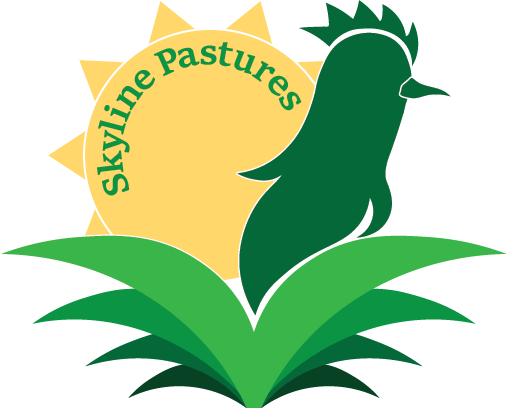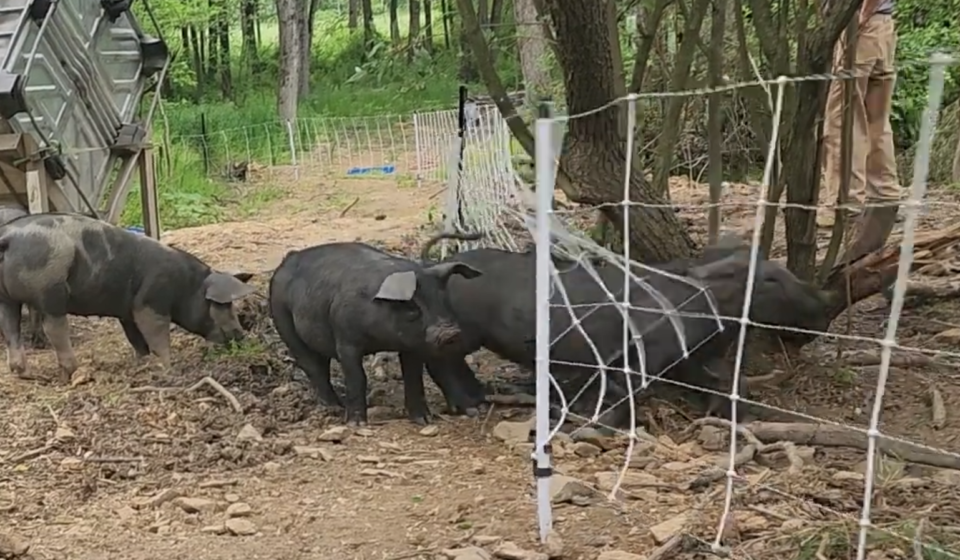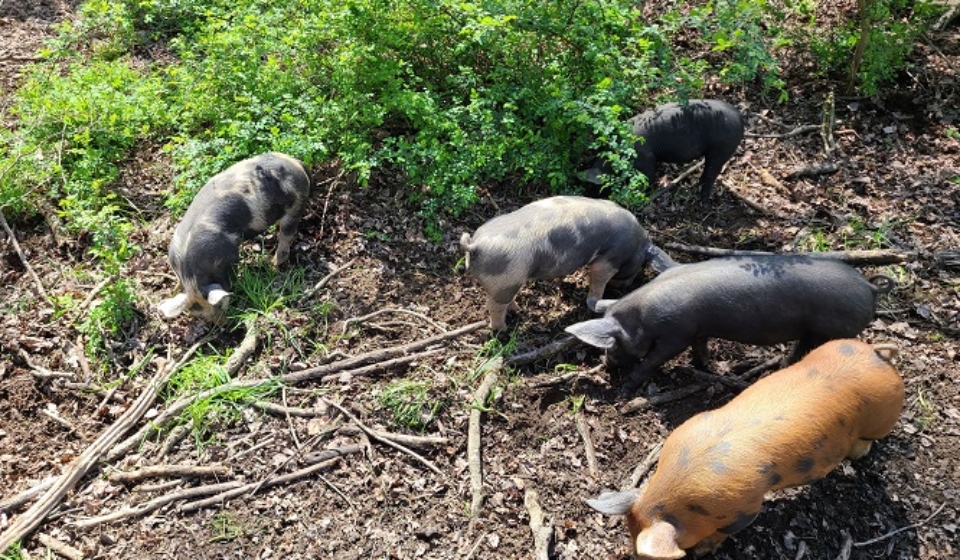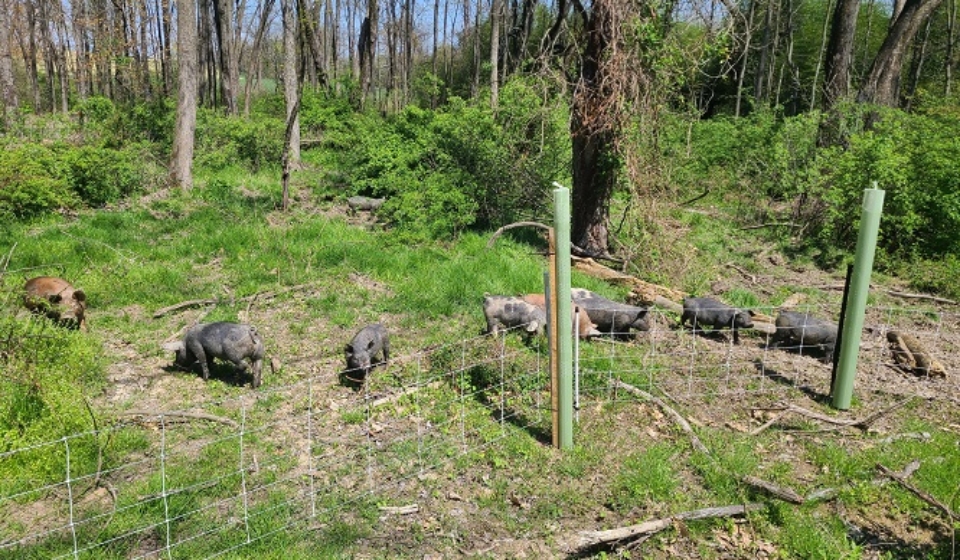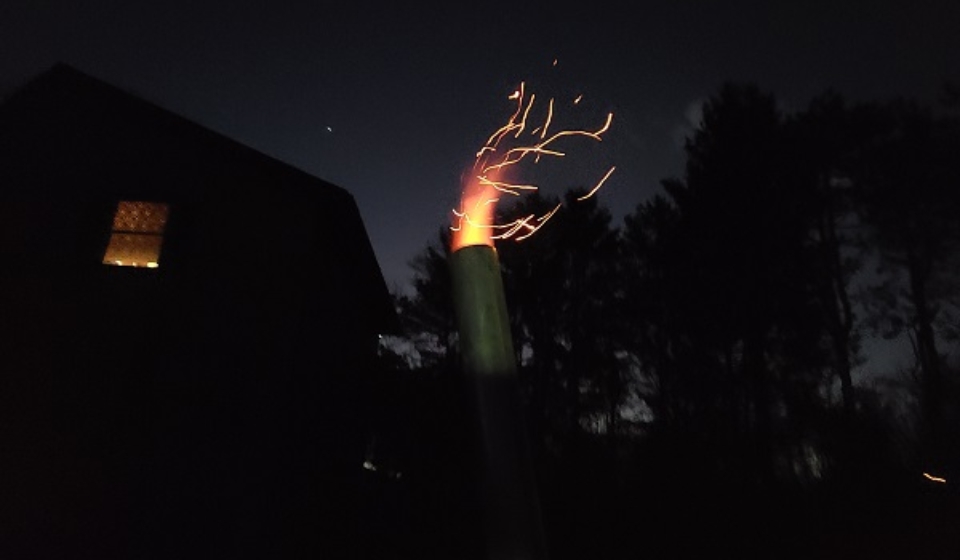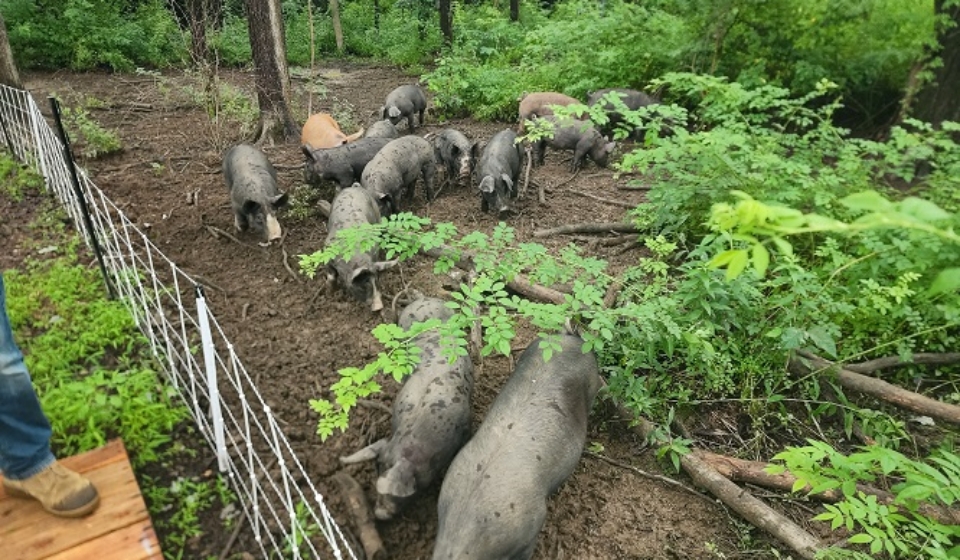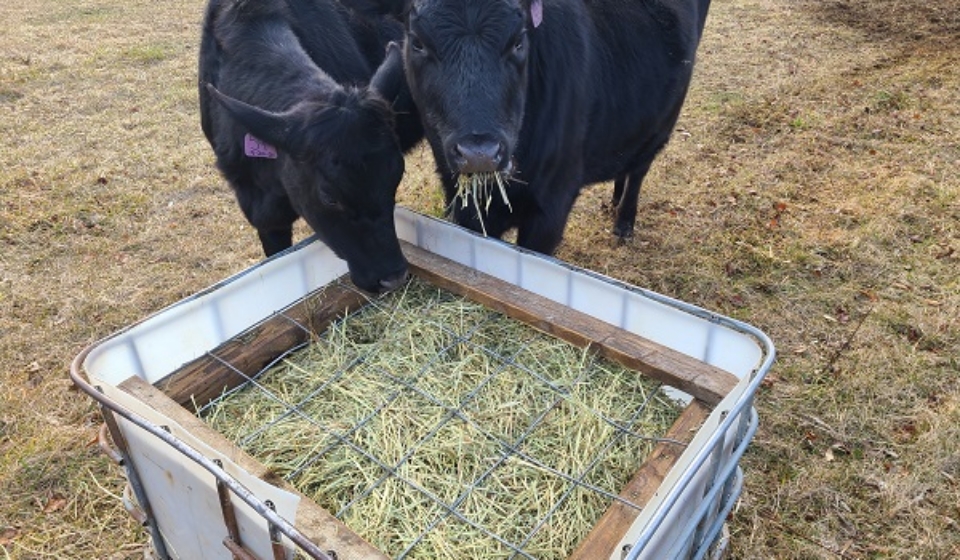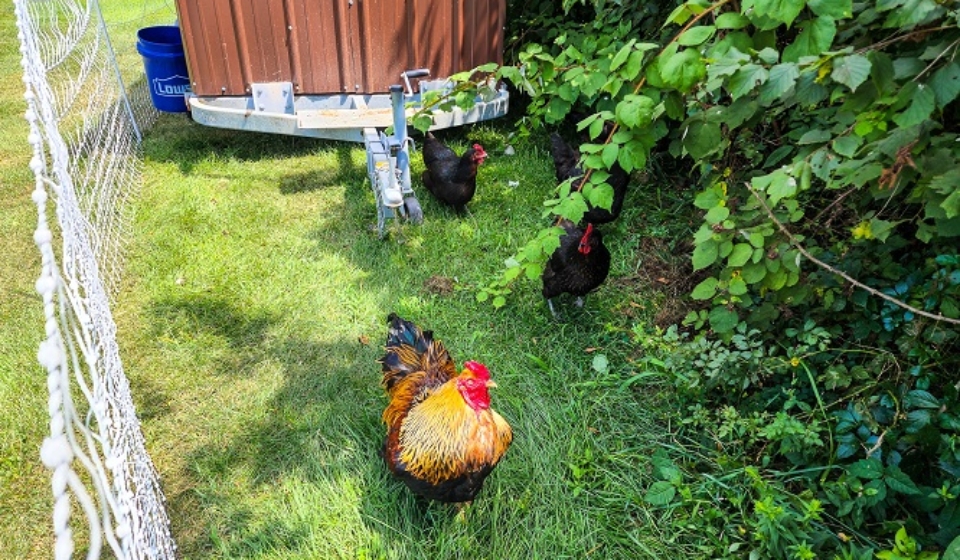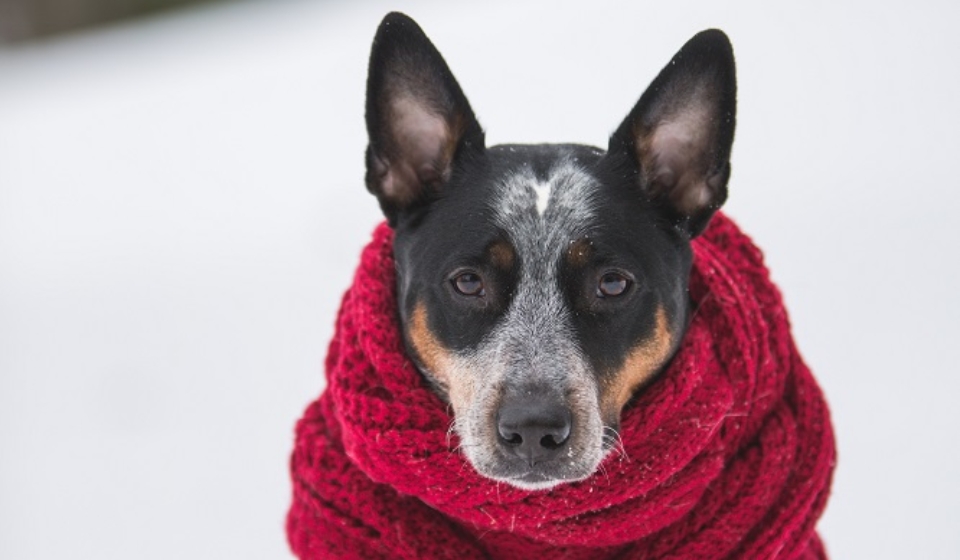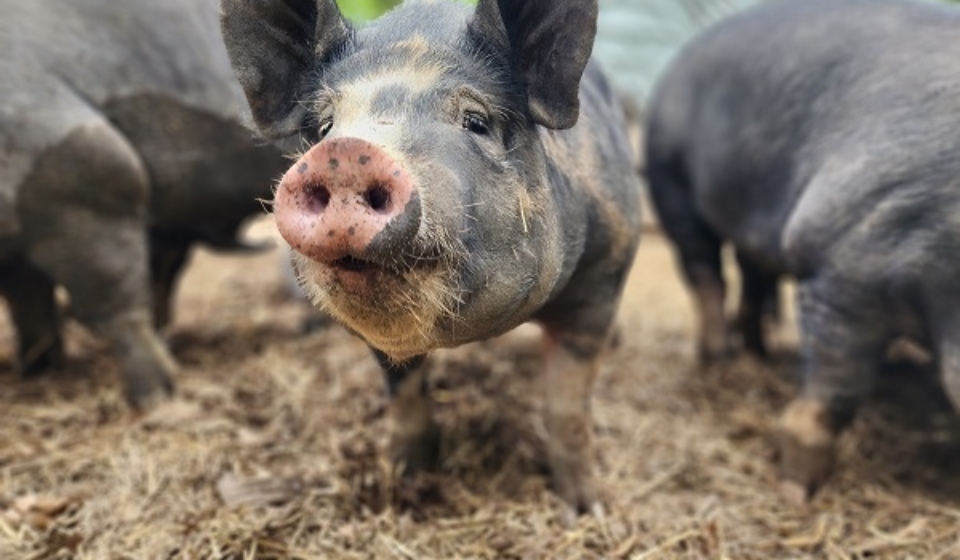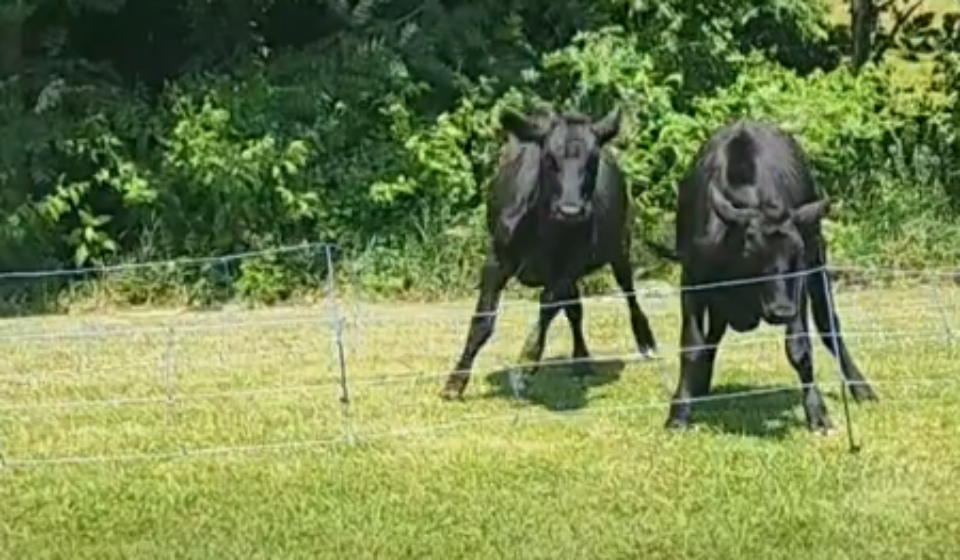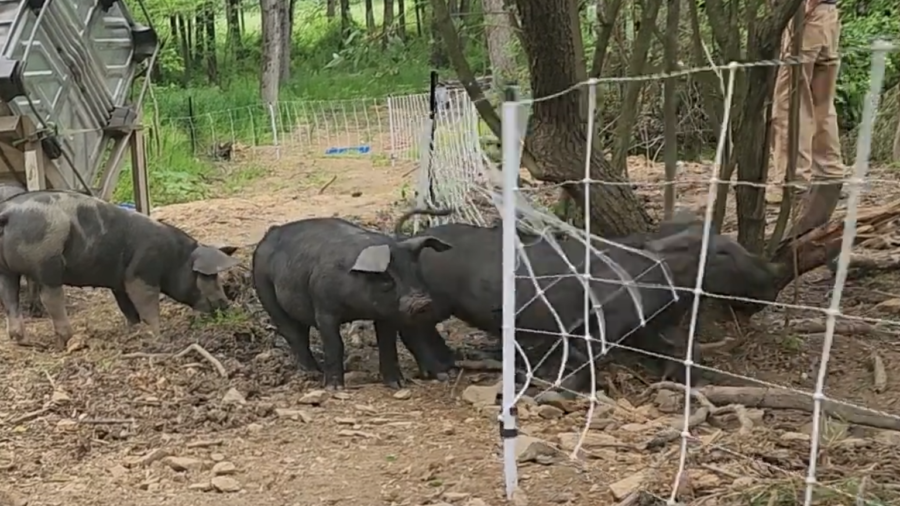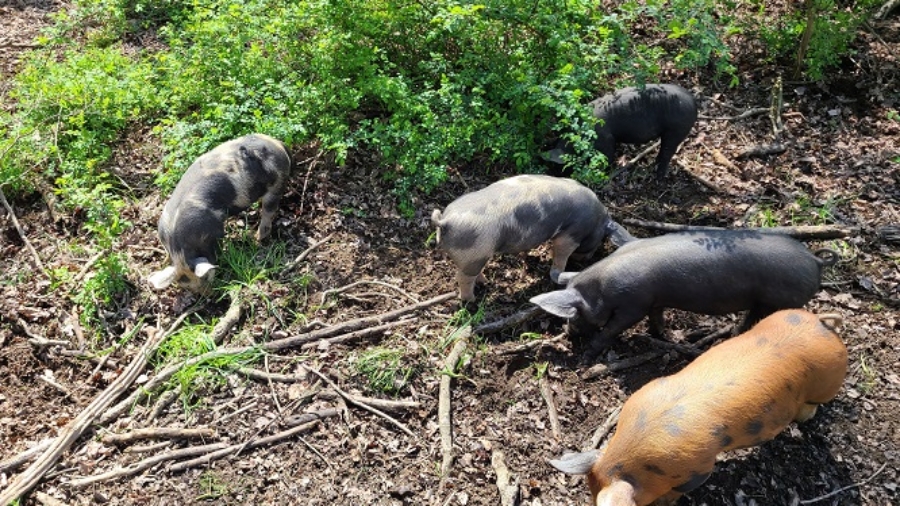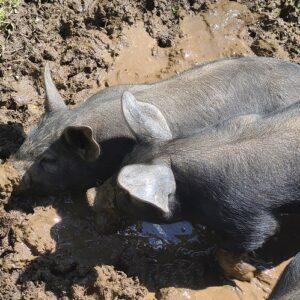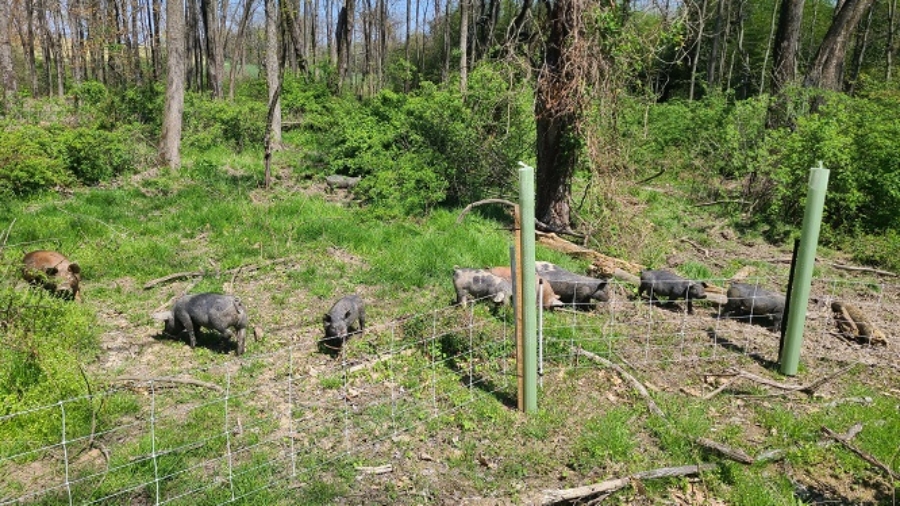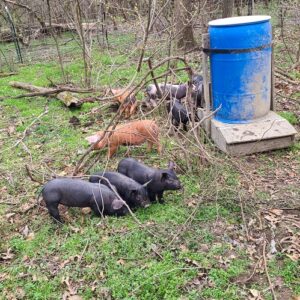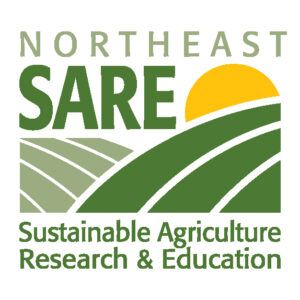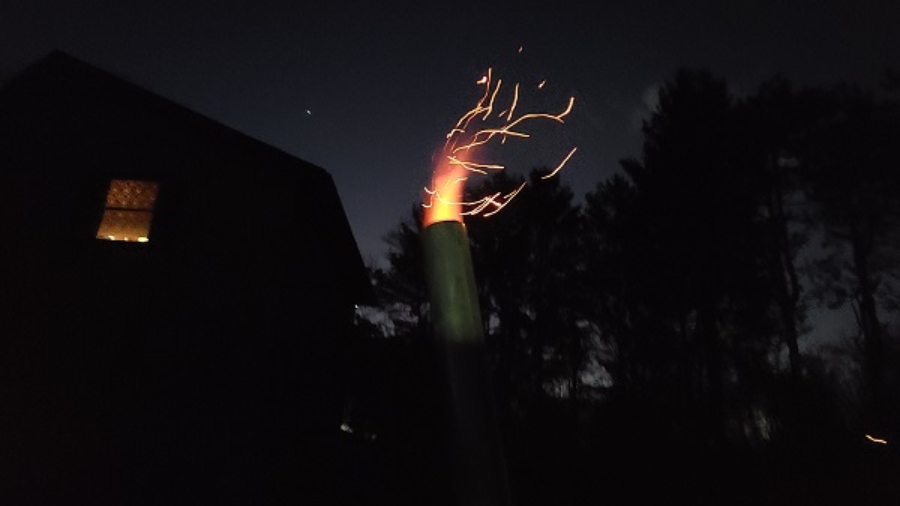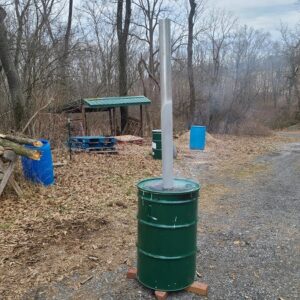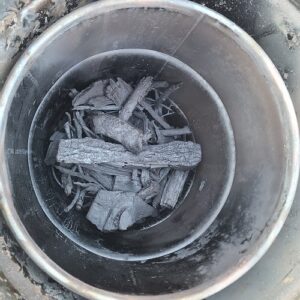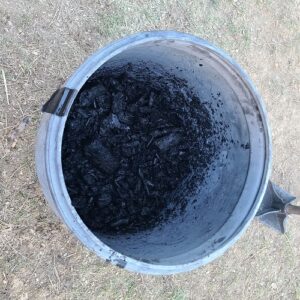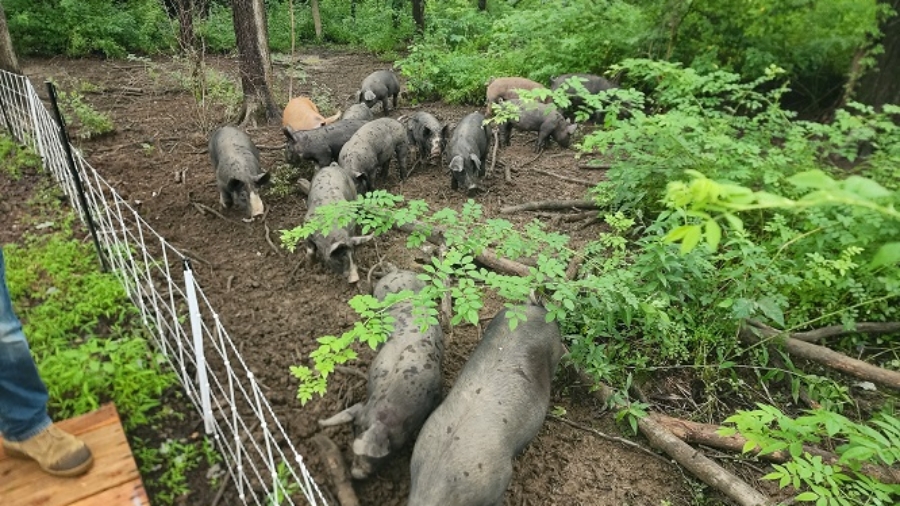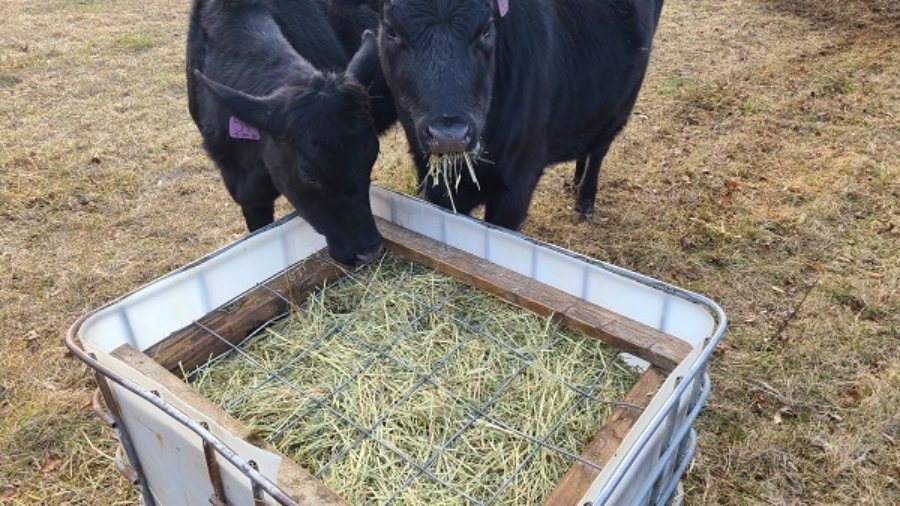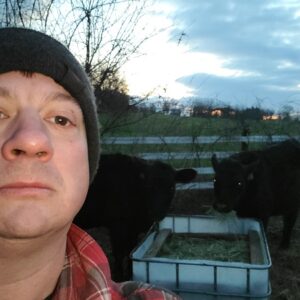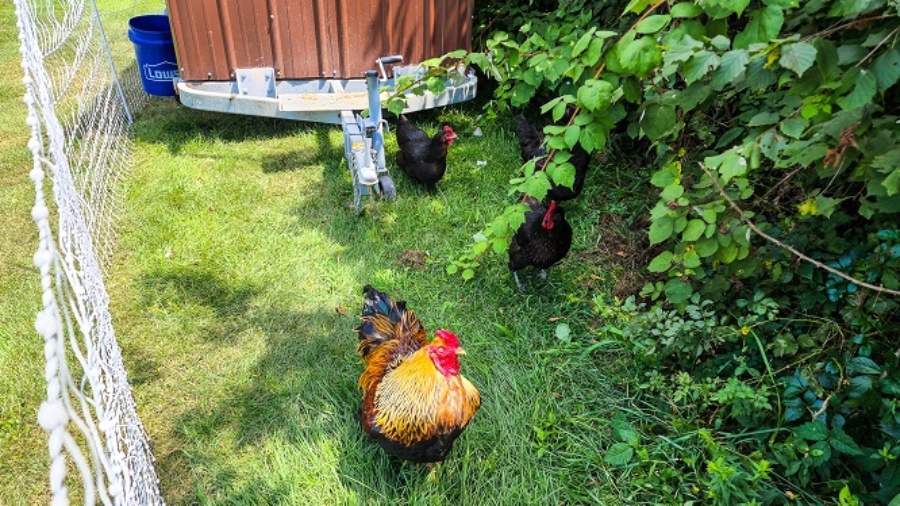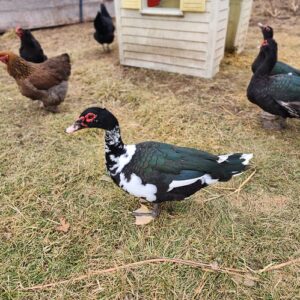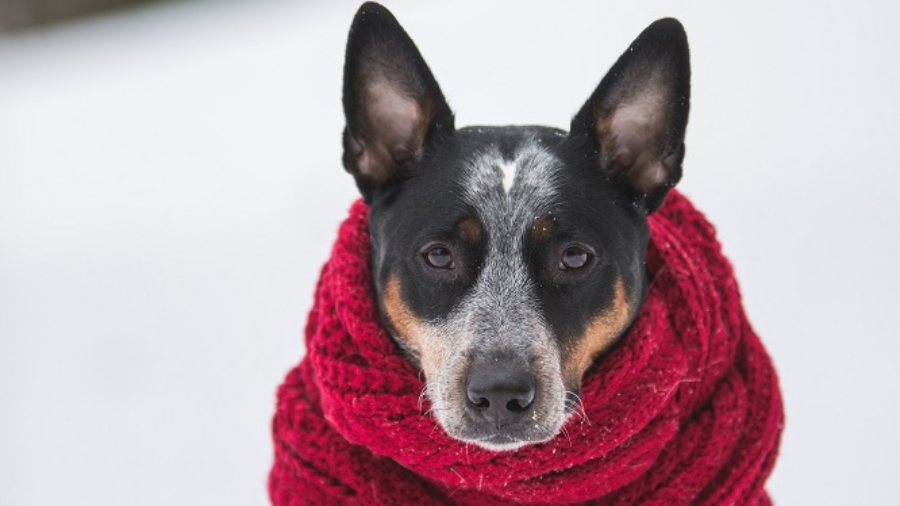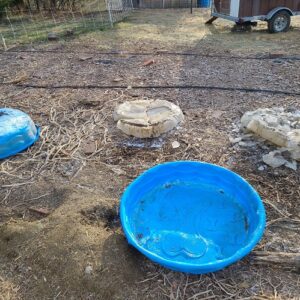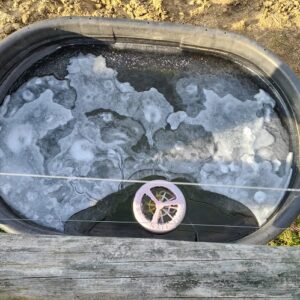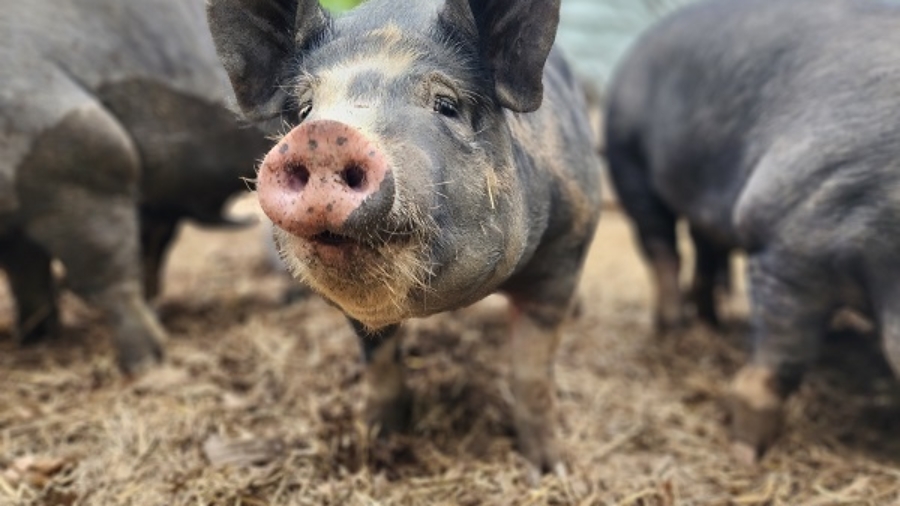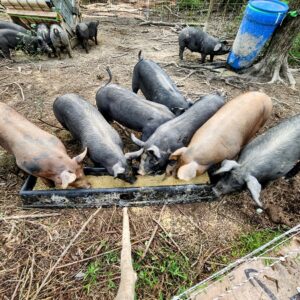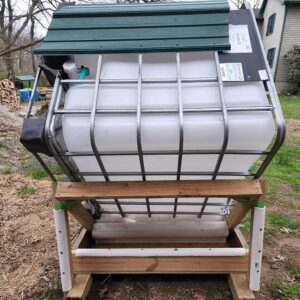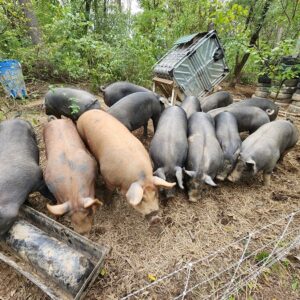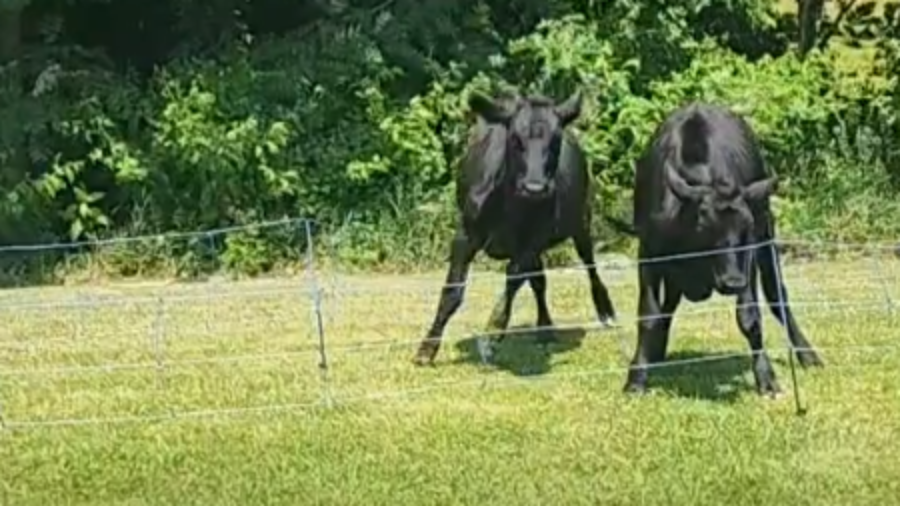Yesterday started off as a good day. It did not end the same.
Buckle up…. It’s a long ride till the end.
The time had come to move the pigs to a new paddock. They had rooted up and trampled the old one pretty good. Last year’s paddocks had recovered quite nicely and were filled with tall, lush, green, grasses that we were excited for the new pigs to enjoy. This area was on the opposite side of our path into the woods and the current pig paddock, so we had to make a laneway across the path and then open it up into the new paddock. This laneway was more narrow than normal but still a good 15ft wide.
Unbeknownst to us, this was our first mistake.
All was set up and ready then CJ realized that he had forgot to move the large feeder into the new paddock. We empty out the feeder and leave the buckets of feed in that area of the old paddock while we move the feeder into the new paddock and set everything up again. CJ places the feeder in the laneway but closer to the opening of the paddock area. He doesn’t fill it with feed yet, as we figure we would fill it once they were off exploring.
Unbeknownst to us, this was our saving grace and our downfall.
CJ and I decided to video the whole process of setting up a new paddock and moving the pigs. We hoped to document how easy it was, the methods we used, and to show the pigs enjoying new pasture. It was supposed to be educational for others, however, we ended up learning a valuable lesson ourselves.
All started out well. The pigs were trapped in home base while we prepared the laneway and paddock. The time came to release the pigs into their new area. We are used to the pigs being cautious and exploring the new areas slowly. So, I got in place in the middle of the laneway, with my camera ready, and talked sweetly to the pigs to coax them out. I have been spending time with them so that they willingly come to me when I crouch down and call them. This worked well and they started to emerge.
They walk slowly down the laneway, sniffing and exploring. Once they get past me is when the problem began. Some hover at the feeder looking for food instead of exploring the new area. The feeder placement now makes the pigs stop or forces them to go around the feeder making their walking area even smaller. Two of the pigs are walking close to the electric net fence. They are walking side by side touching one another. We will call these two pigs: Pig 1 and pig 2 with a cameo of Pig 3 . These are the pigs that will unknowingly cause pure chaos and the impending stampede.
Pig 1 is walking on the right, by the fence. Pig 2 is on the left walking beside pig 1. Along comes pig 3 who walks up to the left of pig 2, placing pig 2 in the middle of a pig sandwich. This is the moment where everything goes to hell. Pig 1 starts to turn to the right. His little piggy butt goes left nudging Pig 2’s piggy butt. Pig 1 continues the turn, but he is too close to the fence, he doesn’t have room. His face brushes the fence sending an electrical current through his body into pig 2. Pig 1 continues his turn to the right. Pig 2 however, is quite surprised that his little piggy butt just randomly exploded with electricity. This spooks him, understandably so, and he tries to turn right as well to escape his own behind attacking him. However, he is blocked by Pig 1 who is still in the process of turning around and pig 3 on his other side. Pig 2 is stuck between two pigs, with his butt ablaze with electricity. He chooses the only option of escape available to him. Straight into the electric net fence. He bursts forward with an amount of instant energy that only a spooked pig can, and his nose goes through the bottom square of the net fence. His behind is no longer on fire with electricity as now his face has exploded with it. There is nowhere to go. He is in full panic mode, so he musters all his piggy strength, says to hell with this, and pushes forward. He pops his whole head through the square and is determined to plow right through, which he does successfully. In this moment of the video, you can hear me say “Oh shiiiiiiiii!” and CJ say “Oh, not good, not good!” as he bursts free of the fence. He is free, running wild. (We will post the video on YouTube in the very near future for your viewing pleasure)
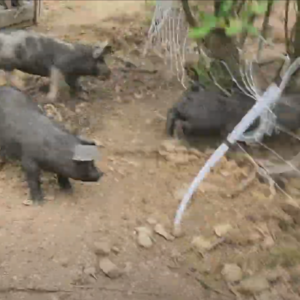
Pig 2 at this point is confused and looking at Pig 1 running away like a mad pig and thinks to himself… “What the heck is going on over there?”. Pig 3, thinking the same, has turned to see what is going on as well.
I drop the camera and run to the fence. Pig 2 has lifted part of the fence up. I remember yelling to CJ if I should hold the fence up so he can get Pig 2 back in. This is the moment mass hysteria sets in and our hopes and dreams of a successful paddock switch is utterly crushed. Another spooked pig runs right under the fence in pursuit of Pig 2. All the other pigs are now scared of whatever has scared Pig 2 and being herd animals, they all rush the fence. In a matter of seconds, we have 10 panicked pigs running straight through the fence. Some are tangled in the fence, getting electrocuted, screaming, and some are making it through. They completely destroy the fence, 9 of them eventually making it out. One pig, I call him Possum, had been stuck in the fence for about 10 straight minutes as CJ and I are trying our best to contain the situation of 12 crazed, freaked out, scared, pigs. CJ runs over and frees him from the fence, but he is on the wrong side of the fence now and runs for his buddies.
All our pigs have now escaped to an area that is no longer fenced in. $12,000.00 worth of pigs are now running wild, in a direction that will eventually lead them to the road if they continue it. This is our worst fear. If you have ever tried to catch a scared, small, pig, (much less 12) you will understand that fear. My heart breaks for this catastrophe, and in that split second as its breaking, I think of CJ, his love for farming, the pigs, and the heartache that this will cause him. My hears shatters a second time. I did not even know your heart could break twice in the same instant.
Thankfully, the pigs all head back to their original paddock and the bushes there that they had come to love hiding under. They nestle under the bush for safety and the comfort of what they know. They are still for the moment. CJ jumps into action, grabs a roll of wire and gets to setting up a one strand wire perimeter fence around the area hoping it is just enough to contain them. I call Little CJ in the house, inform him of our emergency, and ask him to come help. He drops what he is doing and comes out to assist.
While CJ is trying to get the perimeter fence up, the pigs calm down a little and start to emerge from the bush. This has the potential to be very bad. Little CJ & I try to block them from open areas without spooking them any further. This includes, moving slowly and calmly. However, if they run, we must move quickly, which spooks them and they will scatter in all directions. Some change direction and head for an open path, which will eventually lead them right to our neighbor’s cow pasture. My poor heart drops again, but we are able to block them, and they head back to whence they came.
Eventually one of them noticed the feed buckets we left and begins to head over. The others follow and they proceed to chow down. This is good for the moment. It allows the three of us to finish the perimeter fence and then to begin trying to reconstruct the net fencing around them. We do the best we can with the net fence as it is tangled, torn, and twisted. We get it done though. It is a wreck, but it is something.
Both CJ’s move into place as blockers and I try to approach the pigs, calmly, slowly, talking sweetly to announce myself. I move one bucket at a time away from them up to the home base, hoping they will follow. They do not. I spill some of the feed out and crouch down calling them. They are not having it this time. They have already filled their bellies and are no longer interested in the feed or me. We spend a long time calling them and trying to gently coerce them back to home base, to no avail.
I remember reading something about using marshmallows to get pigs to follow you, so while they are calm, I run to the house and my horde of “smores supply” marshmallows. Big CJ at the same time realizes that they have a belly full of dry feed and no water. They will be thirsty. He grabs a water barrel and starts filling it with the hose up in home base. He runs back to help block again. The barrel starts to overflow and trickle down to where the pigs are.
I come running back with my marshmallows, and notice that the pigs are following the stream of water back to home base. I start throwing marshmallows in to entice them further. This works and all the piggies make it back to the safety of home base. Big CJ closes them in with a hog panel and a couple more strands of hot wire.
They are contained. They are safe. We can now breathe again. Our nerves are shot, the pig’s nerves are shot. The pigs bed down in the hay for a nice nap, and CJ & I just sit and watch them for a while, making sure all is well.
We decide to keep them in there for a few days so that they learn to respect the fence again.
We rewatch the video in slow motion and conclude that the narrow lane way, placement of the feeder (with no feed in it) were the initial mistakes and catalyst to our disaster, as we have NEVER lost a pig to the net fence. The area was just too small, they all stopped at the feeder, clogging up the laneway, did not know the area, and had nowhere to go once spooked.
So, in an effort to educate others, we have educated ourselves with a lesson that we will not soon forget.
We will eventually have to move them to the new paddock, with changes to our method, but for now we are just relishing in the peace that they are contained and safe.
Never, and I do mean never, is there a dull moment on the farm!!!
